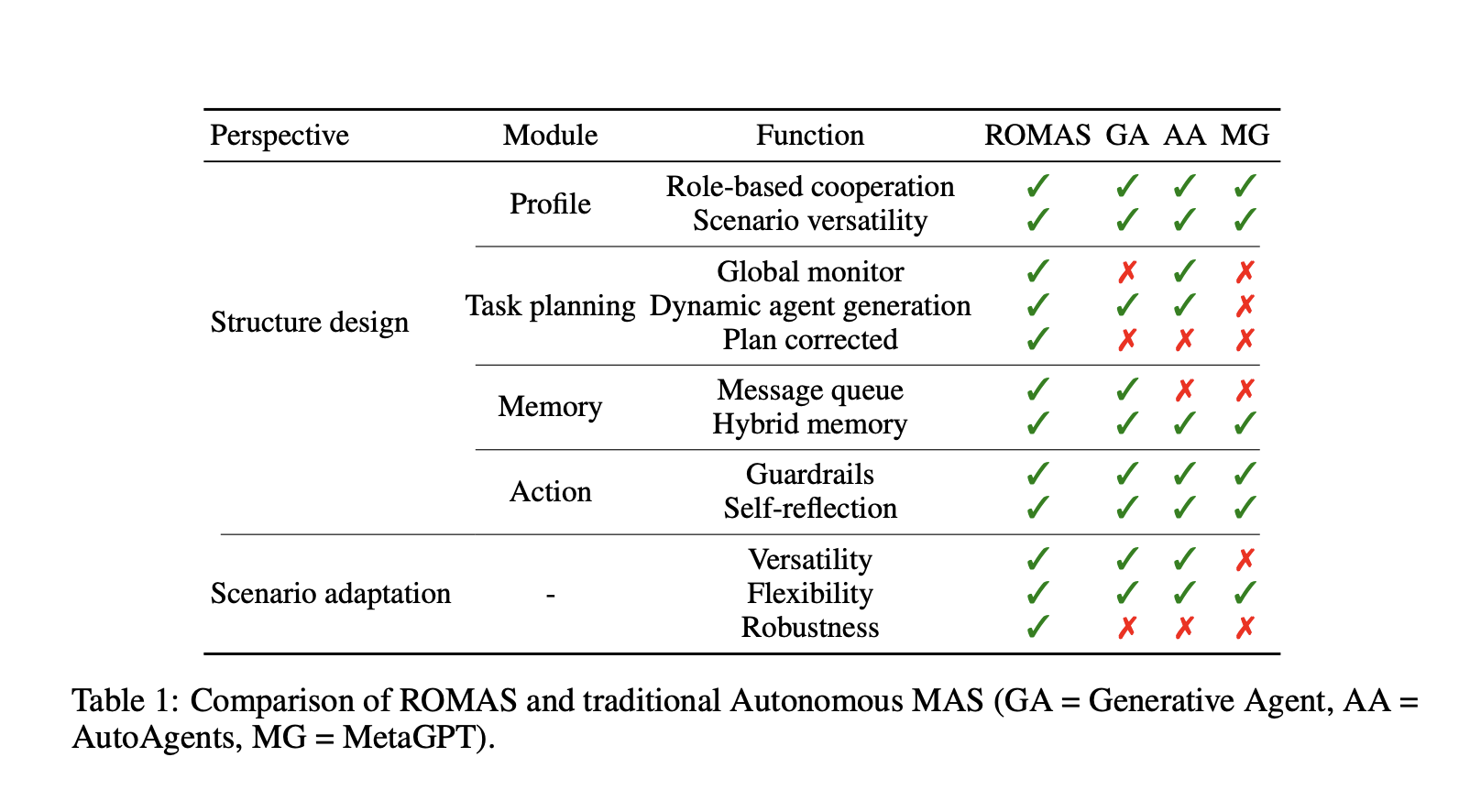
Understanding Multi-Agent Systems (MAS)
Multi-agent systems (MAS) are crucial in artificial intelligence as they enable different agents to work together on complex tasks. They are especially useful in changing environments where they can assist with data analysis, process automation, and decision-making. By using advanced frameworks and large language models (LLMs), MAS improves efficiency and adaptability across various applications. However, they still face challenges in managing real-world complexities.
Challenges in Traditional MAS
Traditional MAS often struggle with flexibility and adaptability. They typically use fixed procedures and task allocations that don’t adjust well to changing conditions, which can lead to errors and ineffective recovery. The absence of self-planning and error correction mechanisms results in wasted resources and poor performance in complex situations.
Current Development Frameworks
Current frameworks like LangChain and AgentScope aid in developing MAS by providing tools for task allocation. However, they fall short in managing diverse data scenarios and offering advanced analytics solutions. Systems like MetaGPT and AutoAgents lack the ability to monitor tasks globally and generate flexible agents, making them less effective in dynamic environments.
Introducing ROMAS: A New Solution
To overcome these limitations, researchers from Ant Group and JD Group have developed ROMAS, a Role-Based Multi-Agent System. Built on the DB-GPT framework, ROMAS allows agents to assume specific roles such as planners, monitors, and workers. This system enhances real-time task monitoring, adaptive error correction, and low-code development, improving efficiency and scalability in database tasks.
Key Features of ROMAS
ROMAS operates in three phases: initialization, execution, and re-planning. During initialization, tasks are divided into subtasks assigned to specialized agents. In the execution phase, agents work together based on set strategies, while a self-monitoring mechanism identifies and corrects errors dynamically. The re-planning phase refines strategies using insights from previous actions, ensuring that objectives are met.
Performance Results
Extensive evaluations show ROMAS’s effectiveness. It achieved an 81.68% success rate on the FAMMA dataset and 85.24% on the HotpotQA dataset. These results surpass traditional systems like Generative Agents and AutoAgents. Notable features such as the monitoring mechanism and memory categorization significantly contributed to its success. ROMAS also simplifies development, reducing code volume and processing time.
Conclusion
ROMAS marks a significant improvement in multi-agent systems by addressing the limitations of existing frameworks. With its role-based collaboration, self-monitoring, and low-code deployment, it streamlines complex tasks such as database monitoring and planning. This innovative system sets the stage for future developments in intelligent multi-agent systems.
Explore the detailed research in the Paper. All credit goes to the researchers behind this project. Stay connected with us on Twitter, join our Telegram Channel, and be part of our LinkedIn Group. Don’t forget to join our thriving community on ML SubReddit.
Transform Your Business with AI
Leverage AI to stay competitive and redefine your operational efficiency:
- Identify Automation Opportunities: Find customer interactions that can benefit from AI.
- Define KPIs: Measure your AI initiatives’ impact on business outcomes.
- Select an AI Solution: Choose tools that meet your needs for customization.
- Implement Gradually: Begin with pilot projects, collect data, and expand wisely.
For AI KPI management advice, reach out at hello@itinai.com. For ongoing insights, follow us on Telegram or Twitter.
Discover how AI can enhance your sales and customer engagement processes. Explore solutions at itinai.com.


























